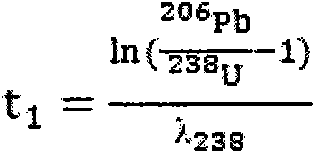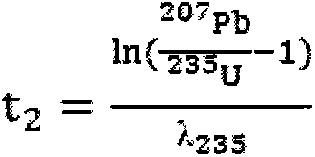Method for determining age of uranium-lead in zircon by using multi-receive secondary ion mass spectroscopy
A secondary ion, multi-receiving technology, applied in the direction of material analysis, measuring devices, instruments, etc. through electromagnetic means, can solve the problems of large lead-lead age measurement errors, large differences in data interpretation, and inability to obtain uranium-lead ages, etc. , to achieve the effect of ensuring the measurement accuracy and prolonging the effective integration time
- Summary
- Abstract
- Description
- Claims
- Application Information
AI Technical Summary
Problems solved by technology
Method used
Image
Examples
Embodiment Construction
[0030] The following will be further described in conjunction with specific samples and the technical solutions involved in the present invention, but not as a limitation to the content of the present invention.
[0031]Taking four zircon age standard samples: 91500, M257, Temora and Plěsovice as examples, the specific implementation of the technical method of the present invention is introduced. The age distribution of the four samples is very wide, and the standard ages measured by other standard methods are 1062.4±0.8Ma, 561.3±0.3Ma, 416.75±0.24Ma and 337.13±0.37Ma, which fully demonstrates that this method is effective in identifying zirconium with an age less than 1000Ma. Advantages in uranium-lead and lead-lead age measurements. These known ages serve as a standard for validation in the method, testing the accuracy of the method.
[0032] First, the above four samples were casted into sample targets with epoxy resin. Lightly ground to reveal the zircon facets, polished...
PUM
 Login to View More
Login to View More Abstract
Description
Claims
Application Information
 Login to View More
Login to View More - R&D
- Intellectual Property
- Life Sciences
- Materials
- Tech Scout
- Unparalleled Data Quality
- Higher Quality Content
- 60% Fewer Hallucinations
Browse by: Latest US Patents, China's latest patents, Technical Efficacy Thesaurus, Application Domain, Technology Topic, Popular Technical Reports.
© 2025 PatSnap. All rights reserved.Legal|Privacy policy|Modern Slavery Act Transparency Statement|Sitemap|About US| Contact US: help@patsnap.com



